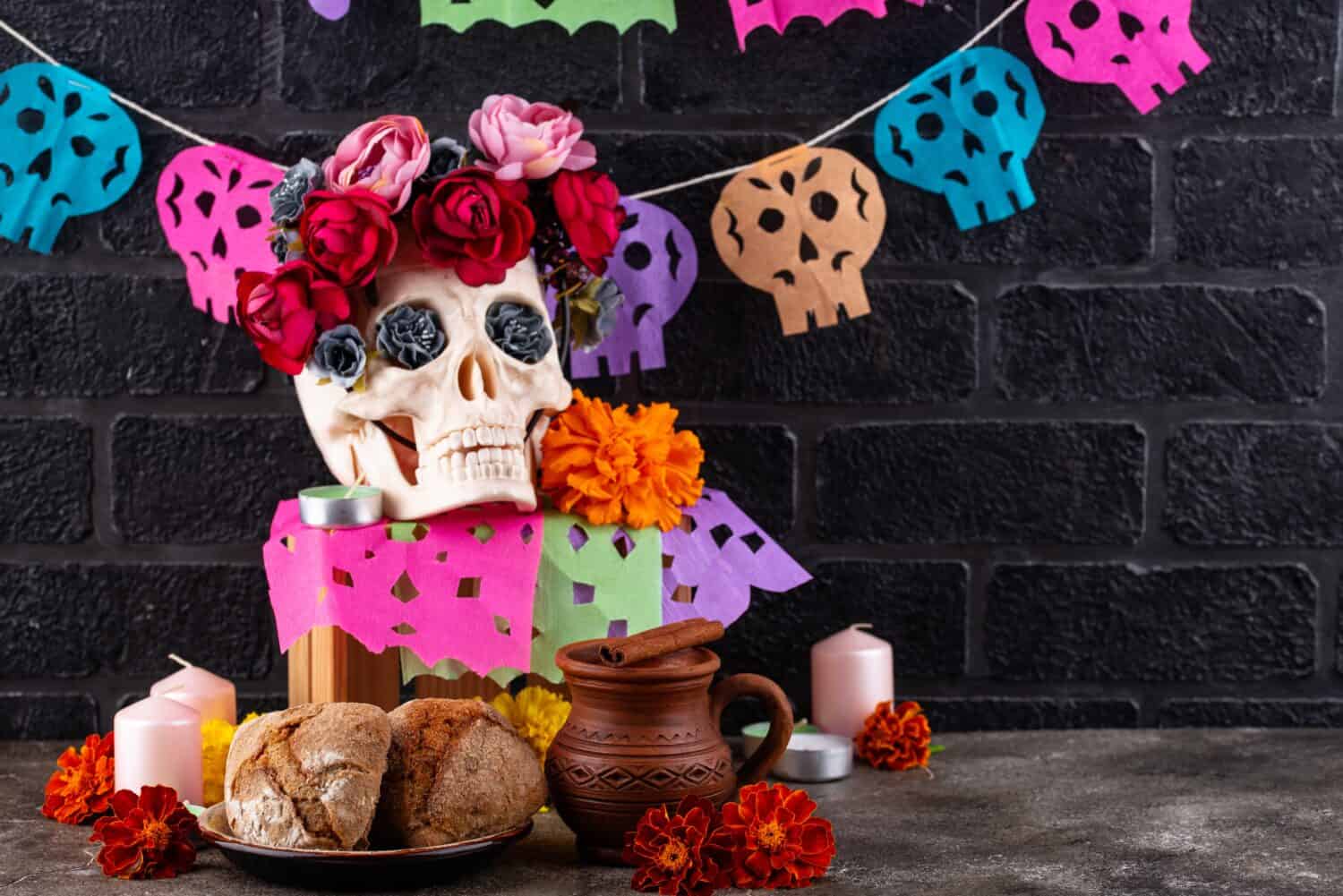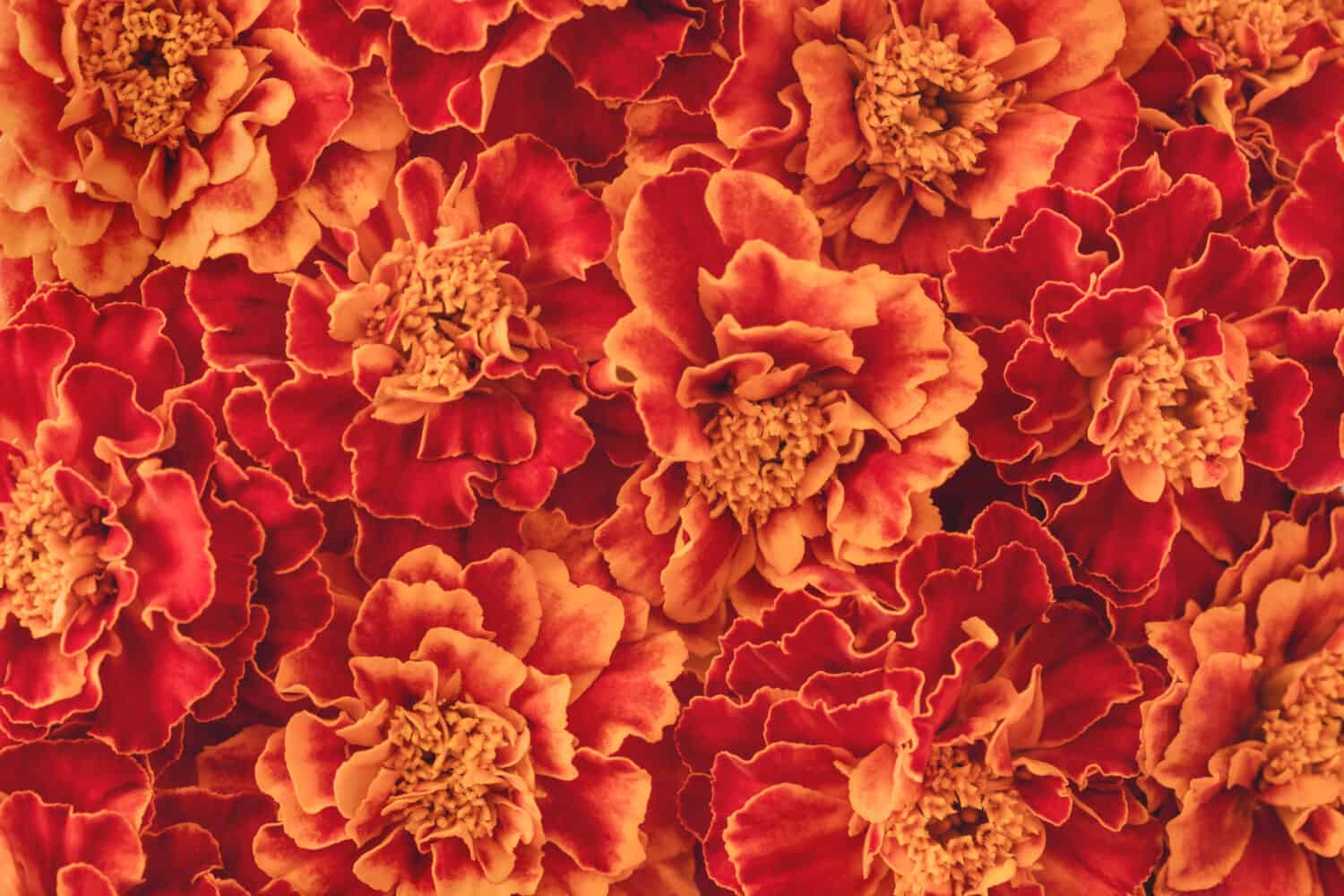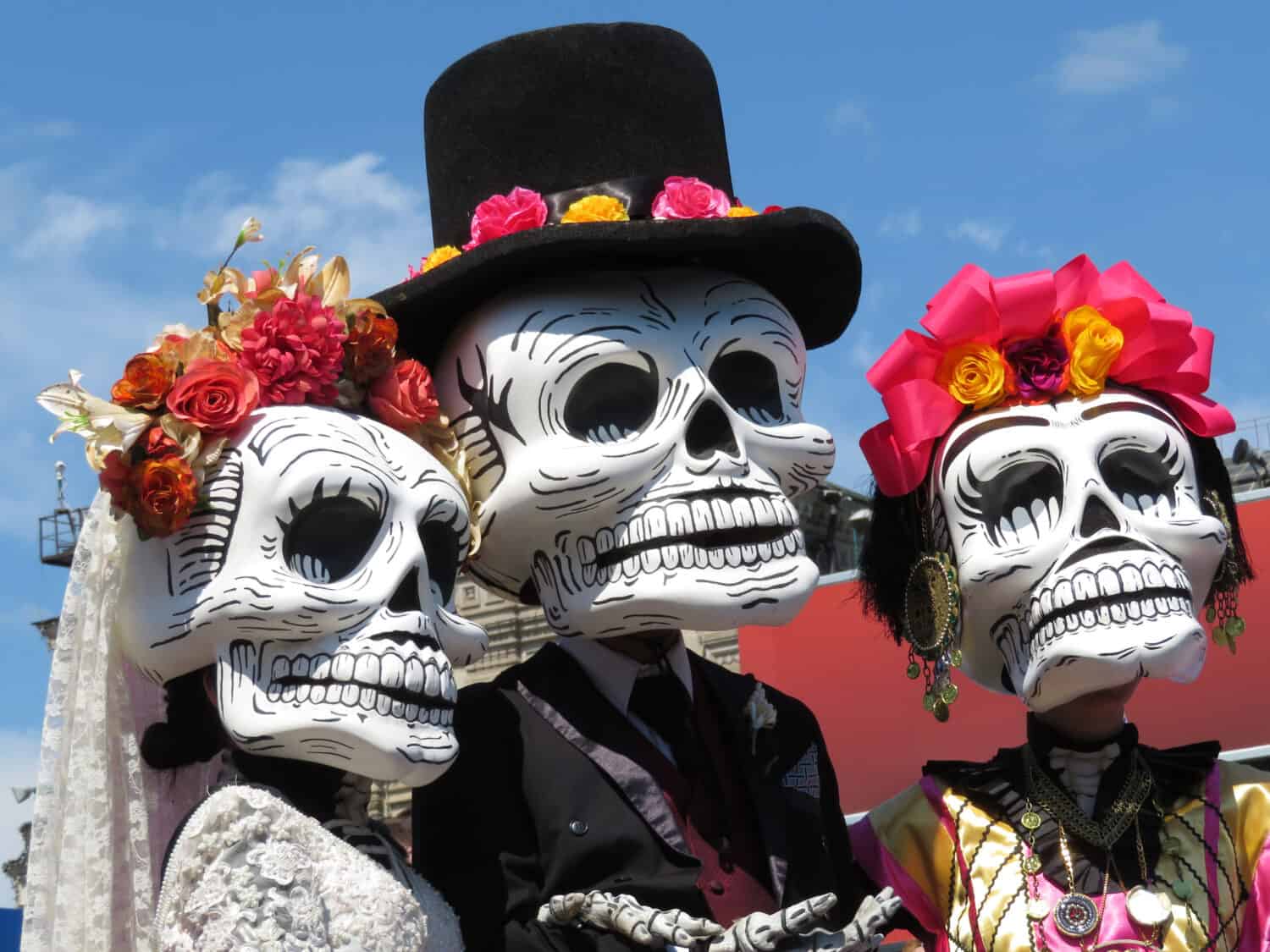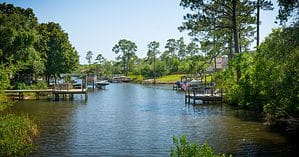Día de los Muertos, or the Day of the Dead, is a vibrant and deeply rooted Mexican tradition celebrated with zeal and reverence. This sacred holiday, observed from October 31st to November 2nd, is a unique blend of indigenous and Catholic beliefs that honors deceased loved ones.
In this comprehensive guide, we’ll delve into the origins, significance, and rich cultural elements of Día de los Muertos, explore the best places to celebrate it in Mexico, and provide essential tips for respectful and memorable participation.
The Blend of Indigenous and Catholic Beliefs
Día de los Muertos has its roots in the fusion of native Mesoamerican traditions, particularly those of the Aztecs and Maya, with Catholicism. It coincides with the Catholic All Saints’ Day (November 1st) and All Souls’ Day (November 2nd) but includes ancient beliefs about death and the afterlife.
Mexicans believe that during this time, the veil between the living and the dead is thin, allowing them to communicate with their departed loved ones.
Ofrendas: A Key Element of the Celebration

Colorful, intricately cut paper banners symbolize the fragility of life.
©Yulia Furman/Shutterstock.com
At the heart of Día de los Muertos are ofrendas, or altars, carefully adorned with symbolic items. These ofrendas serve as a way to welcome and honor the spirits of the dead.
Key Components of Ofrendas
- Photos of the Deceased: Placed at the center of the ofrenda to commemorate loved ones.
- Marigold Flowers (Cempasúchil): These vibrant orange and yellow flowers are believed to guide the spirits to the ofrenda with their fragrance and color.
- Copal Incense: Used to purify the space and create a bridge between the earthly and spiritual realms.
- Food and Drink: The deceased’s favorite dishes and drinks are offered to nourish their spirits during their visit.
- Calaveras (Sugar Skulls): Intricately decorated sugar skulls represent the cycle of life, death, and rebirth.
- Pan de Muerto: A sweet, round bread adorned with crossed bones made from dough.
- Papel Picado: Colorful, intricately cut paper banners symbolize the fragility of life.
Marigold Flowers (Cempasúchil)

The bright oranges and yellows of marigolds are prominent in ofrendas.
©ganjalex/Shutterstock.com
The marigold, known as cempasúchil in Mexico, holds special significance during Día de los Muertos. These flowers are believed to have a strong scent that attracts the spirits of the dead, guiding them to their ofrendas. Marigolds are often spread on the ground in paths leading to cemeteries and ofrendas, creating a vivid and aromatic trail for the spirits to follow.
Traditional Dishes and Recipes
Día de los Muertos is a time of culinary delights, with families preparing and sharing traditional dishes. Some of the most iconic foods include:
- Mole: A rich, flavorful sauce made from a blend of chiles, chocolate, and spices, usually served over poultry or meat.
- Tamales: Steamed masa dough filled with a variety of savory or sweet fillings, wrapped in corn husks.
- Atole: A warm and comforting drink made from masa (corn dough), water, and sweeteners, often flavored with cinnamon or chocolate.
- Calabaza en Tacha: Candied pumpkin, typically served as a sweet treat.
Traditional Clothing and Face Painting

Skeleton masks are typical costumes for Dia de los Muertes parades.
©Oleg Elkov/Shutterstock.com
During Día de los Muertos, you’ll find a rich display of traditional clothing and face painting. The clothing varies by region but often includes vibrantly colored clothes and embroidered textiles. Women may wear huipiles (loose-fitting blouses) and colorful skirts, while men might don guayaberas (lightweight shirts) and sombreros.
Face painting is a prominent part of the celebration, with many individuals donning the iconic Catrina makeup or skeleton face paint. La Catrina, an elegant skull lady, is a satirical character created by artist José Guadalupe Posada. She represents the idea that death is a natural and equalizing part of life, crossing social class.
The Celebrations: Where to See and Participate
1. Mexico City – The Grand Capital Celebration
Día de los Muertos, held from November 1st to 2nd, marks a time when families gather to remember and honor their ancestors. Mexico City, the country’s bustling capital, is home to one of the grandest and most iconic celebrations.
What to Expect
- El Zócalo: The heart of the city comes alive with elaborate ofrendas (altars) and vibrant marigold decorations.
- Parades and Processions: Witness captivating parades featuring skull-faced performers and colorful traditional clothing.
- Art Exhibitions: Explore art exhibitions dedicated to Día de los Muertos at places like the Palacio de Bellas Artes.
Why It’s Special
Mexico City’s celebration showcases the fusion of ancient Aztec traditions with Catholicism. The grandeur of the ofrendas and the sense of unity among the people make it an unforgettable experience.
Specific Locations to Visit
- El Zócalo: The main square where the heart of the celebration takes place.
Other Activities During the Festival
- Visit the National Museum of Anthropology: Learn about the Indigenous cultures that shaped Día de los Muertos.
- Explore Chapultepec Park: A beautiful escape within the city for leisurely walks.
Tips for Visitors
- Respect the privacy of families visiting gravesites.
- Keep noise levels down during the commemorative events.
- Try traditional foods like pan de muerto (bread of the dead) and sugar skulls.
2. Oaxaca – A Cultural and Culinary Feast
Oaxaca, a picturesque colonial city, is renowned for its rich cultural heritage and is among the top places to celebrate Día de los Muertos in Mexico.
What to Expect
- Gravesite Visits: Families in Oaxaca create elaborate graveside ofrendas, often adorned with copal incense and the region’s famous mezcal.
- Giant Radish Festival: Witness the Noche de Rábanos, where locals carve intricate scenes from giant radishes.
- Street Markets: Explore vibrant markets filled with colorful marigolds, sugar skulls, and traditional foods.
Why It’s Special
Oaxaca’s celebration is an explosion of art, music, and food. The city’s unique cultural blend makes it a must-visit destination.
Specific Locations to Visit
- Panteón General Cemetery: An atmospheric cemetery where you can witness heartfelt ofrendas.
Other Activities During the Festival
- Visit the Oaxaca Ethnobotanical Garden: Explore the diverse flora used in traditional ceremonies.
- Attend a Traditional Zapotec Dance Performance: Experience the region’s indigenous culture.
Tips for Visitors
- Ask for permission before taking photos, especially near gravesites.
- Respect the spiritual aspects of the holiday and maintain decorum.
- Taste traditional Oaxacan dishes like tlayudas and mole.
3. Patzcuaro, Michoacán – The Pueblo Magic of Día de los Muertos
Patzcuaro, a charming pueblo mágico (magical town) in Michoacán, is steeped in indigenous traditions and offers a more intimate Día de los Muertos experience.
What to Expect
- Cemeteries at Midnight: Join the locals in visiting the cemeteries late at night, where candlelit ofrendas create a magical atmosphere.
- Floating Candles: Witness the stunning spectacle of candles floating on the Patzcuaro Lake, symbolizing the journey of the deceased to the afterlife.
- Artisan Markets: Explore markets featuring intricate crafts, such as pottery and handwoven textiles.
Why It’s Special
Patzcuaro’s Día de los Muertos celebration preserves Indigenous Purepecha traditions, making it a unique and spiritually moving experience.
Specific Locations to Visit
- Isla Janitzio: A boat ride to this island offers a unique perspective on the festivities.
Other Activities During the Festival
- Explore the Basilica of Our Lady of Health: A beautiful example of colonial architecture.
- Take a Day Trip to Tzintzuntzan: Visit ancient ruins and more ofrendas.
Tips for Visitors
- Be respectful when attending ceremonies or entering cemeteries.
- Participate in local customs, like bringing small gifts for the dead.
- Stay in local lodgings to fully immerse yourself in the culture.
4. Janitzio Island – A Scenic Día de los Muertos Retreat
Janitzio Island, located in Lake Pátzcuaro, is a captivating destination for experiencing Día de los Muertos in a picturesque setting.
What to Expect
- Cemetery Candlelight Procession: Join the procession of locals carrying candles and marigolds up the island’s steep slopes to the cemetery.
- Giant Altar: Marvel at the colossal ofrenda dedicated to the island’s most famous resident, General Lázaro Cárdenas.
- Panoramic Views: Enjoy breathtaking views of the lake and surrounding islands from the island’s summit.
Why It’s Special
Janitzio Island’s unique geography and the dedication of its residents to Día de los Muertos traditions make it a serene yet vibrant place to celebrate.
Specific Locations to Visit
- Isla Janitzio: The entire island is the focal point of the celebration.
Other Activities During the Festival
- Explore the Island’s Craft Stalls: Purchase unique souvenirs from local artists.
- Enjoy Fresh Lake Fish: Taste regional specialties at island restaurants.
Tips for Visitors
- Respect the solemnity of the cemetery and the local customs.
- Dress appropriately and be mindful of the island’s terrain, which can be hilly and uneven.
- Plan your visit in advance, as accommodations on the island are extremely limited.
5. Mixquic – A Hidden Gem Near Mexico City
For a more off-the-beaten-path experience, head to Mixquic, a small town located just outside of Mexico City, to celebrate Día de los Muertos.
What to Expect
- Candlelit Cemetery: Explore the town’s cemetery, lit by thousands of candles, where families gather to remember their loved ones.
- Panteón de San Andrés: Visit the iconic cemetery, where intricate sand tapestries (alfombras de arena) are created to honor the dead.
- Processions and Dances: Witness traditional processions and folk dances performed by locals in colorful costumes.
Why It’s Special
Mixquic’s Día de los Muertos celebration retains a sense of authenticity and is an excellent choice for those seeking a more intimate and traditional experience.
Specific Locations to Visit
- Mixquic Cemetery: The heart of the town’s celebration.
Other Activities During the Festival
- Explore Mixquic’s Colonial Church: A beautiful historic site in the town center.
- Participate in Workshops: Learn about traditional crafts and customs.
Tips for Visitors
- Arrive early to secure a good viewing spot for the evening candlelight ceremonies.
- Ask for permission before taking photographs, especially in the cemetery.
- Support local artists by buying handmade crafts and souvenirs.
Día de los Muertos, celebrated from October 31st to November 2nd, is a profoundly important cultural event in Mexico. It’s a time when families come together to honor their ancestors through colorful ofrendas, lively parades, and heartfelt remembrance.
Each of the destinations mentioned offers a unique and special way to celebrate Día de los Muertos. Mexico City’s grandeur, Oaxaca’s cultural depth, Patzcuaro’s indigenous traditions, Janitzio Island’s scenic beauty, and Mixquic’s authenticity all provide unforgettable experiences.
As a visitor, remember to respect the cultural significance of this holiday, be mindful of local customs, and engage respectfully with the areas you visit. Immerse yourself in the beauty of Día de los Muertos, and you’ll not only witness a vibrant celebration but also gain a deeper appreciation for Mexican culture and traditions.
So, whether you choose the busy capital, the picturesque colonial city, a magical pueblo mágico, an island retreat, or a hidden gem, celebrating Día de los Muertos in Mexico promises to be a once-in-a-lifetime cultural experience that you’ll cherish forever. Plan your trip, embrace the traditions, and explore the rich tapestry of Mexican heritage.
The photo featured at the top of this post is © BeteMarques/iStock via Getty Images
Thank you for reading! Have some feedback for us? Contact the AZ Animals editorial team.







